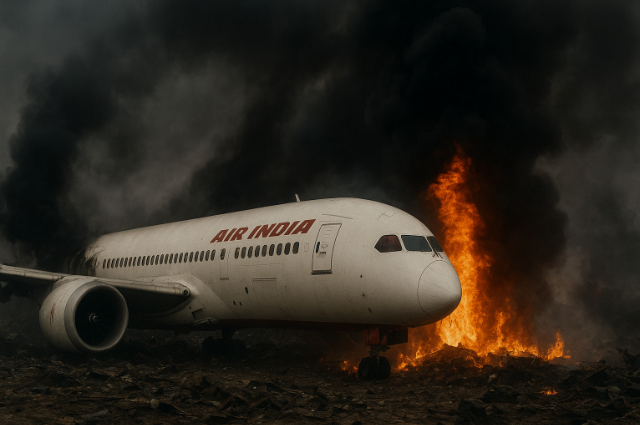
Just 39 seconds in the air—that’s all it took. A tragic descent, a deafening crash, shattering the dreams, aspirations, and lives of more than 240 people.
Air India Flight 171, a Boeing 787-8 Dreamliner, crashed shortly after takeoff from Ahmedabad Airport into B.J. Medical College, Meghaninagar, on 12th June 2025. The flight carried 242 occupants (230 passengers and 12 crew). Only one survived.
The country mourned. Families were shattered. The question echoed across living rooms and newsrooms alike: “Is air travel even safe?”
Statistically, yes—aviation is the safest mode of travel, with a 99.999977% safety record. But the remaining 0.000023%—small as it looks on paper—represents over a thousand lives lost worldwide. And when tragedy strikes, percentages mean nothing.
The Tragic Incident
On June 12, 2025, Flight 171 took off from Sardar Vallabhbhai Patel International Airport at 13:39 local time. Just seconds after liftoff, the aircraft lost altitude.
Sirens. Flames. Chaos.
What should have been a routine international journey turned into one of India’s worst aviation disasters. The plane plunged into the B.J. Medical Hostel, injuring not only passengers but also young doctors inside—some napping, some studying—until, quite literally, the sky fell upon them.
The Technical Glitch—or Something More?
The right engine had been replaced in March 2025, while the left was last serviced in 2023, due for inspection in December 2025. Still, how could such a catastrophe happen?
Aviation investigator Kishore Chinta explained:
“The age of the engine has no bearing on its health, especially for Genx-1B engines.”
Unlike older engines, the Genx-1B series uses FADEC (Full Authority Digital Engine Control), a digital system that constantly monitors performance in real time.
The Cockpit Voice Recorder (CVR) and Flight Data Recorder (FDR) are still under analysis by the DGCA with international assistance. Until then, speculation continues.
Possible Explanations
Preliminary evidence and eyewitness accounts suggest three critical failures:
Wing Configuration Error
Video footage indicates the wing flaps were retracted during takeoff. Normally, flaps extend 10–15 degrees to generate lift. Their absence meant the aircraft had almost no aerodynamic support.
Landing Gear and Nose Position Conflict
The landing gear never retracted, while the nose tilted sharply upwards—an impossible combination, as if the aircraft was trying to take off and land at the same time. Was this human error, mechanical failure, or both?
Strange Engine Sound Before Impact
Eyewitnesses and the sole survivor, Ramesh Verma (Seat 11A), reported hearing an unusual roaring sound. Some experts suggest the possible deployment of the Ram Air Turbine (RAT)—a backup system triggered during major engine, hydraulic, or electrical failures.
Is Boeing at Fault?
Since 2000, Boeing aircraft have been involved in 107 accidents. Even more alarming: in the five days following Flight 171’s crash, Air India reported five additional technical incidents—four involving Boeing planes.
Historically, seven out of eight major Indian air disasters have involved Boeing models. Internal reports and whistleblower statements have raised concerns about Boeing’s quality control.
As one Boeing employee bluntly told the New York Times in 2020:
“I honestly don’t trust many people at Boeing.”
So, is this a coincidence—or evidence of systemic flaws in design, manufacturing, and oversight?
Conclusion
The Air India Flight 171 crash will be remembered as one of the darkest days in Indian aviation history. Families are left grieving, and a nation is left questioning. The final investigation report will eventually reveal the technical truth—but no report can account for the human tragedy.
For now, all we can offer are condolences, unanswered questions, and the hope that lessons will be learned.
